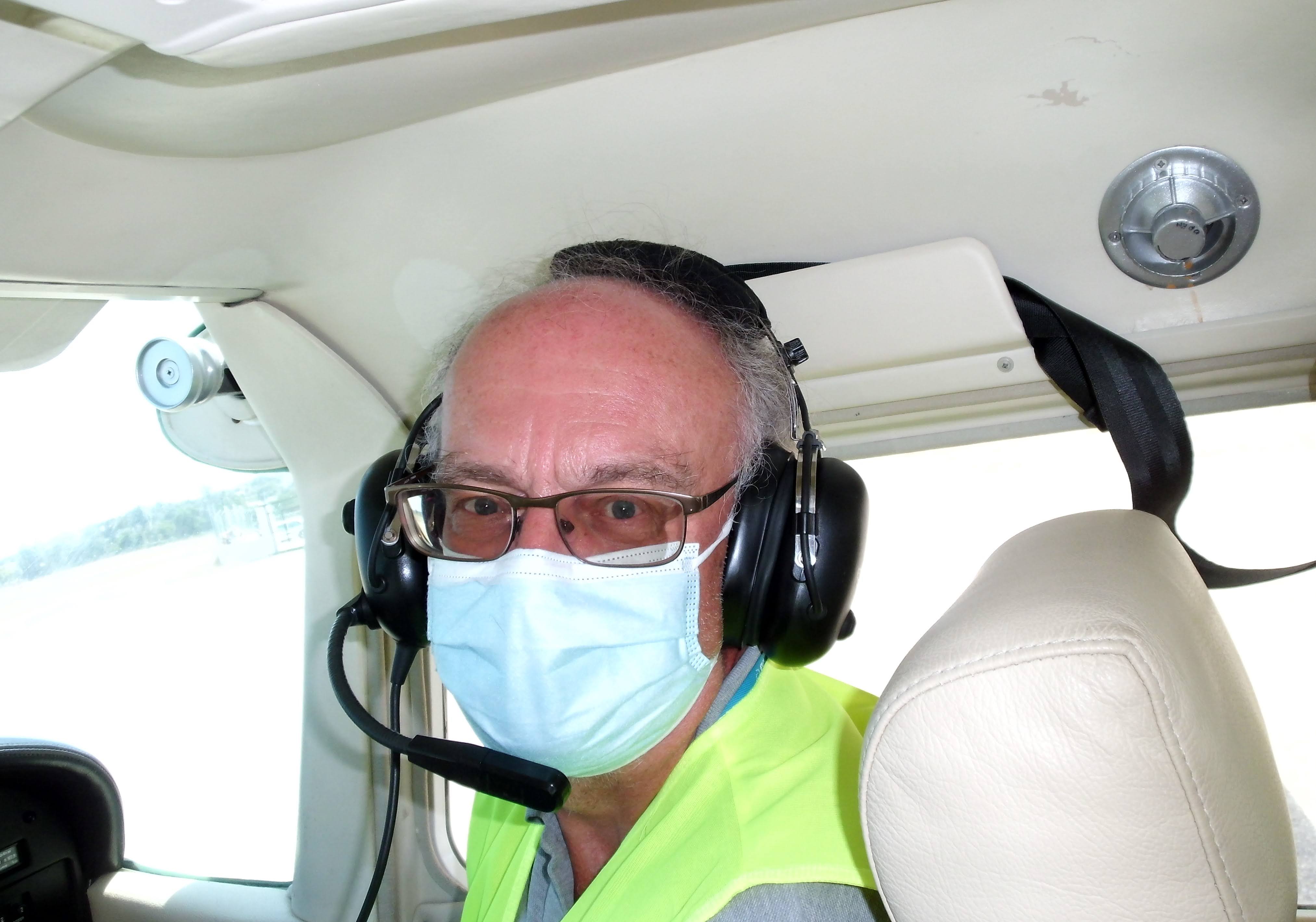King's Cup - 1932
-
John, Caspar
Lieut Caspar John, RN 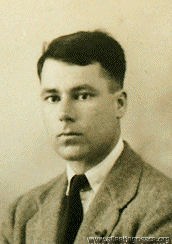 1930, aged 27
1930, aged 27Son of Augustus (the artist and well-known pacifist); mother died when he was 3; later became Admiral of the entire Fleet, which must have gone down well with his dad. d. 1984.
-
Johnson, Wiliam Evelyn Patrick
Flt-Lt Wiliam Evelyn Patrick Johnson b. 7 Apr 1902
Filed several patents when working for Power Jets Ltd, e.g. "A means for injecting liquid coolant into the gas flow path through the turbine in a direction initially transversely to the median thereof whereby the gas flow deflects the coolant, still in liquid form, on to the region of the leading edges of the turbine rotor blades."
d. 1976 - Kensington, Greater London
-
Keat, G H
Mr G H Keat ?? -
Lacayo, Mark Anthony
Mr Mark Anthony Lacayo 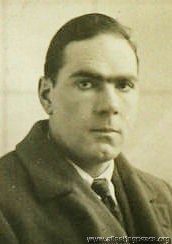
photo: 1925, aged 26
b. Marcos Antonio in Altrincham, Cheshire on 17th April 1898; a 'shipper', but also Comper's Sales Manager.
Flt-Lt in WWII; d. 11th Feb 1946 in a flying accident in a Mosquito, and is buried near Litchfield.
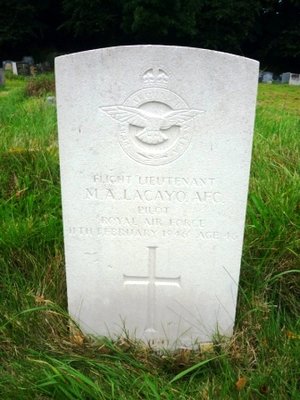
-
Leech, Haliburton Hume
P/O (later F/O, Flt Lt) Haliburton Hume Leech 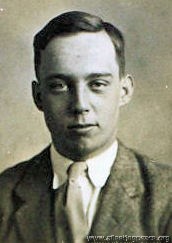
photo: 1926, aged 18
Haliburton H Leech was born 16 Apr 1908, in Wylam-on-Tyne, Northumberland. He competed in 6 King’s Cup races – every year from 1929 to 1934.
His father, Dr. (later Sir) Joseph William Leech, J. P., was the Sheriff of Newcastle-upon-Tyne, and later its M.P.; at the time they lived in Wylam Hall, which according to English Heritage is a vast “rambling house built in the 15th century with 18th-19th century alterations, since divided into 3 apartments”. Haliburton was the youngest of 3 sons.
He went to Harrow from 1922 to 1925, then gained his Royal Aero Club Certificate (No 7993) at Cramlington with the Newcastle-on-Tyne Aero Club, flying a D.H. Moth, on the 10 Apr 1926.
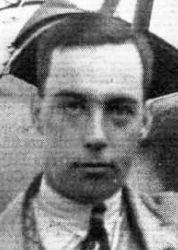
In 1931, Flight described him thus:
“… a well-known figure at flying meetings, as his aerobatic demonstrations in the Martlet are always amongst the prettiest to be seen.
He entered Cranwell as a cadet in 1925, finally leaving there and being posted to Tangmere in 1927.
He was promoted to Flying Officer in July 1929, and in 1930 went to the Royal Aircraft Establishment at Farnborough, and has since been engaged on a great deal of test work, flying a large variety of machines.
This year he was selected as one of the members to join the High Speed Flight at Felixstowe preparatory to receiving his training to take part in the forthcoming Schneider Trophy Race, but, much to his disappointment, he was later sent back to Farnborough, as it was found that there were too many pilots in the flight.
F/O. Leech has raced on numerous occasions in light aircraft, and is always consistent.”
However, during one such aerobatic demonstration, one cynic pointed out that "After all it does not matter if he does crash, as his father is a doctor!”
In 1932, he piloted the Royal Aircraft Establishment’s Scarab (a parasol-wing modification of the D.H. 53 Humming Bird) on its first flight.He was posted to the School of Naval Co-operation, Lee-on-the-Solent, on the 1st March 1934, then (as a Flight Lieutentant) to No. 824 (F.S.R.) Squadron, Upavon, on the 8th October 1934.
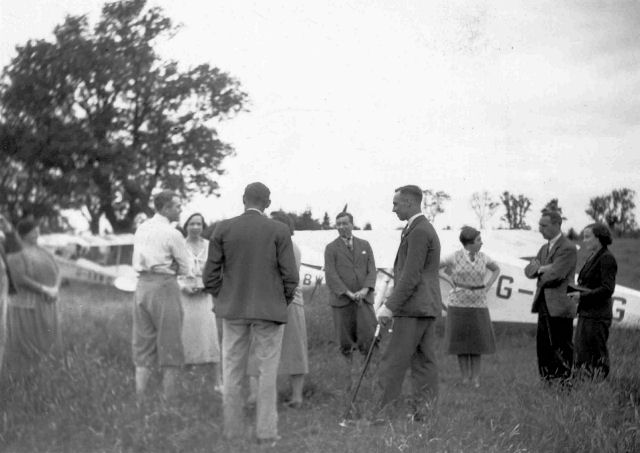
Here he is (with a bandaged left hand) with Leslie Runciman, 'C.C', and Connie Leathart, amongst others He was best man at his elder brother Basil's wedding to Grace Luckham in September 1937, then married Miss Ruth Janet Chernocke Elliott (the younger daughter of Mr and Mrs A E Elliott of Little Hill, Bromeswell, Woodbridge) at Eyke Church, Suffolk on 9th October 1937. The happy couple then left by air, from Martlesham, 'for abroad'.
He died 5th May 1939, in St Bartholomews Hospital, when he was only 31 - I don't know why, I'm afraid. Perhaps it was as a result of a flying accident, or perhaps natural causes. Unusually, 'Flight Magazine', who carried innumerable references to his flying displays, carried no news of his death - normally they would have produced a short obituary of someone so well-known in aviation circles.
His gravestone (with thanks to the Gravestone Photographic Resource) is in Eyke Church:
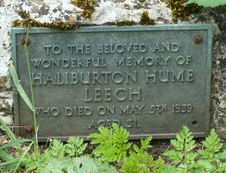 "To the beloved and wonderful memory of Haliburton Hume Leech".
"To the beloved and wonderful memory of Haliburton Hume Leech".His father, Sir Joseph, died a year later.
Ruth married a Mr Foster in 1940 and died in 1986 in Ipswich; she was referred to as 'Ruth Janet C Lady Foster'.
He competed in loads of air pageants and races throughout the 30s, including:
- The Kingston-upon-Hull Air Race, at the Hull Air Pageant which was held to celebrate the opening of the Hull Aero Club clubhouse in April 1930.
The 7 entrants were Leech (flying "Miss Perry's D.H. Moth G-AASG" *); Winnie Brown flying her Avian G-EBVZ; Winifred Spooner in her D.H. Moth G-AALK; Ivor Thompson (D.H. Moth G-AACL); Alfred Jackaman (D.H. Moth G-AADX); Robert Cazalet in his Westland Widgeon G-EBRM, and Capt G Thorne in Avro Avian G-AAHJ.
Leech finished first but was disqualified for ‘not turning at one of the marks’.
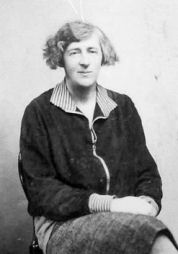
* Miss Violet Perry (seen here), who flew at the Berks Bucks and Oxon Club, is not listed as the owner of G-AASG, though; it apparently belonged to 'Miss M Shillington'.
September 25, 1932 saw him coming 3rd in the Yorkshire Trophy Race - "175 and a half miles over two triangular circuits" in the Arrow Active, behind Edgar Percival in a Gull, and Col. Louis Arbon Strange in his Spartan.
Later, "F/O. Leech gave one of his thrilling, if not hair-raising, displays on the Arrow Active."
In July 1933 he was in the Cinque Ports Wakelfield Cup Race; coming 3rd in a Pobjoy-engined Comper Swift.A few weeks later (12 August 1933), he put up the fastest time in the London to Newcastle Race in Richard Shuttleworth's Gypsy-engined Comper Swift G-ABWW, but ended up 5th (of 10) on handicap. He received a cheque for £10 for his effort; the 166.09 mph was "the highest registered speed obtained on any British light aircraft" at the time.
In July 1937, he was one of 15 competitors in the Devon Air Race (which also included Alex Henshaw, Connie Leathart, Tommy Rose and Geoffrey de Havilland). He came 3rd, in a Spartan Arrow.
In the King’s Cup:
1 - G-EAUM (1929)
This aircraft was a real-old-timer, an Avro 534 ‘Baby’, first registered in July 1920. Squadron Leader Harold Payn had raced it in 1922, and R. A. Whitehead (who sold it to Leech) in 1928. Leech, in turn, sold the aircraft to H.R.A. Edwards, and it was finally withdrawn from use in November 1934.
2 - G-AALK (1930)
This D.H.60G Gipsy Moth was almost new (first registered August 1929), and belonged to the Household Brigade Flying Club at Hanworth. It was flown by Squadron Leader the Hon. Frederick E Guest in the 1931 race, then went to Wrightson Air Hire, but crashed at Shackend Railway Station near Hawick in April 1937.
3 - G-ABIF (1931)
This Southern Martlet 205 had only been registered in January 1931, and belonged to Miss J Forbes-Robinson. Theodore C Sanders flew it in the 1933 King’s Cup race. It was withdrawn from use in 1940, but went to the ATC during WWII, until it was finally cancelled in December 1945.
4 - G-ABVE (1932, 1933)
G-ABVE was the only Arrow Active II ever built, registered in March 1932 to Arrow Aircraft Ltd of Yeading, Leeds. Leech flew this aircraft in the 1932 and 1933 races, achieving 137mph.
In an extraordinary link with MacRobertson aviator Geoffrey Shaw, they were together in July, 1932:
"Six members joined the Yorkshire Aeroplane Club during June, amongst them being Mr. Geoffrey Shaw and Mr. A. C. Thornton. The latter is the designer of the" Arrow Active," and his latest production, the "Active II" has been much in evidence, being tested by F/O.H. H. Leech."
After the race, it was stored at Yeading until 1957 before being completely renovated in 1958, with the installation of a 145-hp Gipsy Major engine. It survives, and is now in the Real Aeroplane Collection at Breighton Aerodrome, Selby, Yorks.
5 - G-ACUP (1934)
Unfortunately, the registration of this brand-new Percival D.3 ‘Gull Six’ did not prove prophetic; Leech only managed fifth in the heats, despite averaging 160mph. The Gull went on to re-appear in the Kings’ Cup in 1938, flown by H Thomas-Ferrand, and was then sold in Australia in May 1939.
-
Legard, J F
Mr J F Legard ?? -
Lowdell, George Edward
Wing Cmdr George Edward Lowdell AFM 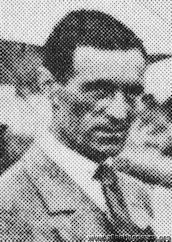
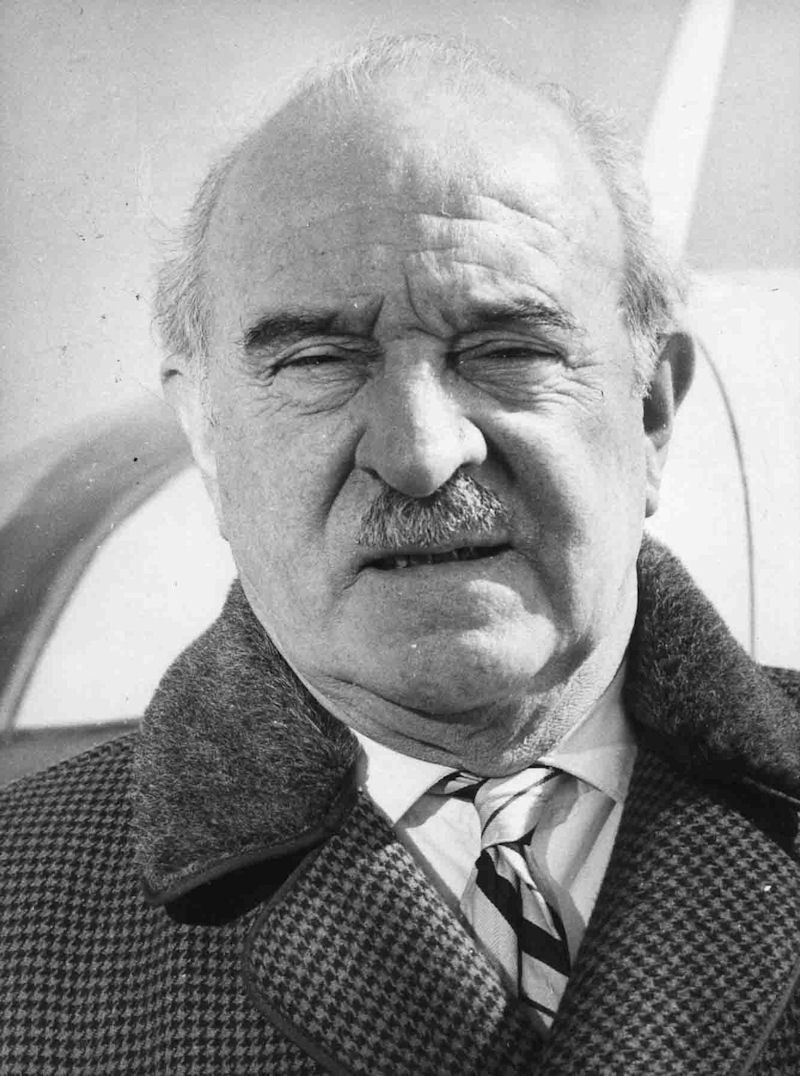
Flying instructor at RAF Digby in 1925 (he taught Allen Wheeler to fly, who said of him "How lucky I was with my instructor George Lowdell! Apart from being a magnificent pilot he was the most inspiring teacher").
Instructor with Suffolk and Eastern Counties Aero Club in 1928; later a Wing Commander, and instructor with Shoreham School of Flying.
However, in 1932 he was convicted of drunk-driving:
"STUNT FLIER FINED
CLACTON CARNIVAL SEQUEL
George Edward Lowdell, 29, an airman instructor, of Belvedere Road, Ipswich, was charged at Colchester on Friday with being drunk in charge of a motor car.
Stanley Elgar, postmaster of Colchester, stated that he was driving his car from Walton-on-the-Naze to Colchester, and just after he had left Weeley he noticed a Morris car in front of him " performing a rather peculiar course all over the road, swerving frequently from the near side to the off.
Several times it mounted the margin of the road, and on one occasion two young ladies had to " skip " quickly out of the way. The speed was never excessive. Near Greenstead Rectory the car was pulled up, and witness went to the driver and said: "Do you realise what you have been doing? You have only just escaped death, and narrowly missed killing other people." Defendant seemed dazed, and when told that he could not go on he said he would have to go on, he had to get to Brooklands tnat night.
Two police-officers came, and defendant was arrested. Replying to Mr. Frampton, witness said the driver did not give him the impression that he was a very tired man. , Arthur Houston, commercial traveller, Thorpe Road, Tendring, who was proceeding in the direction of Colchester, said defendant's car was '' all over the place."
When charged, defendant's reply was so muddled that he could not be understood. Dr. William F. Payne said he came to the conclusion that defendant was drunk. Defendant said he had had some whisky and beer.
Defendant, in the witness-box, said he was formerly chief instructor to the Suffolk Aero Club, and was now instructor at Brooklands. He had been giving a demonstration at Clacton. He flew to Clacton, and during the day gave exhibitions of trick flying and joy rides. In the morning there was an accident, and he was up in the air longer than usual at upside down flying in order to amuse the crowd. During the day he had nothing alcoholic to drink, but after he had finished flying at 6.30 p.m. he had five beers. He had had nothing to eat since luncheon, and left Clacton at 8 p.m. After a heavy day he felt queer when in the car, and kept dozing.
When he arrived at the police - station he felt 'dead tired," and his whole condition he put down to continuous flying, to having no food, and to the heat of the day.
Edwin Freshfield, an undergraduate, and a pupil of defendant, said the stunt flying defendant did that day imposed a great strain. When defendant left Clacton he was very tired, but not drunk. Mr. Frampton submitted that defendant's condition was due to absolute fatigue.
The Chairman (Mr. C. M. Stanford) said the Bench were unanimous in finding the case proved. While it might have been only an indiscretion, they had to take serious notice of it, and defendant would be fined £5, with £2/5/9 costs. The Bench appreciated the action of those witnesses who had come forward at their own expense and loss of time to protect the public, and to save the defendant himself from further danger. "
-
Mayers, Howard Clive
Howard Clive Mayers DSO, DFC and bar 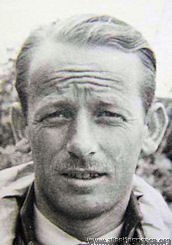
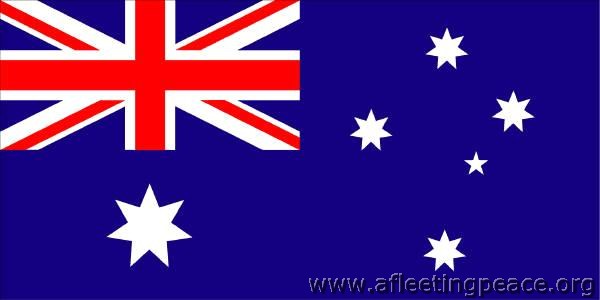 b. 9th Jan 1910 in Sydney
b. 9th Jan 1910 in SydneyRead engineering at Jesus College, Cambridge, but left when his father died, and formed Air Log Ltd in May 1932, making instruments for aircraft and ships. Commissioned into the RAF in WWII, initially as a test pilot and then with 601 (County of London) Squadron AAF at Tangmere during the Battle of Britain. Later posted to Egypt. At least 10 victories.
Air Transport Auxiliary in WWII
His 1942 DSO citation reads "Wing Cdr Mayers is an expert on bombing and machine-gun attacks and his tactical knowledge has contributed much to the success of long-range fighter operations. On two occasions in May this officer led a formation in attacks on aircraft bringing supplies to the enemy and destroyed many of them."
Killed in WWII: 20th July, 1942 when a Wing Commander 250 Sqn RAFVR; commemorated on the Alamein Memorial.
Mayers radioed that he was having engine trouble and was making a forced landing in the Qattara Depression. His aircraft was found and, there being no trace of him, it was presumed that he had been captured. Mayers was not heard of again and may have been lost in a Ju52, which was shot down whilst ferrying PoW’s to Germany.
King's Cup in 1932, London-Newcastle race in 1932
-
Mellor, Harry Manners
Flt-Lt Harry Manners Mellor b c1903. From Much Hadham, Herts
Killed in WWII: 26 May 1940, when a Wing Commander 22 Sqn RAF; commemorated at Runnymede.
-
Ormston, John Gladholme
Mr John Gladholme 'Jack' Ormston 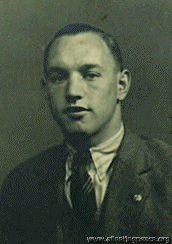
photo: 1931, aged 21
a Speedway Rider from Durham. Yep; a speedway rider. Apparently, [it says here], a rider in the historic 1936 World Championship Final. [see also Arthur Franklyn].
"Mr Ormston has already used his Westland Widgeon on several occasions as a means of travelling between one speedway track and another, or from Wembley to his home at Coxhoe, Co. Durham."
d. 2006.
-
Pashley, Cecil Lawrence
Mr Cecil Lawrence Pashley 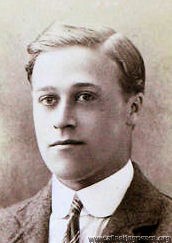 1911, aged 20
1911, aged 20.jpg) 1935
1935An early pioneer (RAeC certificate No 106) and well-known instructor of large numbers of airmen including F G Miles; born 1891 in Great Yarmouth but lived in Shoreham (a road there, and a bus are named after him, it seems, plus a Tiger Moth called 'Spirit of Pashley').
He and his brother started a flying school at the newly-opened Shoreham Aerodrome in 1914, but obviously WWI intervened almost straight away and he became a test pilot for the Admiralty, then flew for Central Aircraft Co in Northolt after the war.
He and F G Miles set up Southern Aircraft Ltd (best known for the 'Martlet').
Chief Instructor to the Southern Aero Club and its successor the South Coast Flying Club.
d. 1969
-
Percival, Capt Edgar Wikner
Capt Edgar Wikner Percival 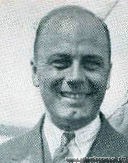 1930, aged 32
1930, aged 32Australian aeronautical genius who ended up in the USA and New Zealand, via Luton.
b. 23 Feb 1897 in Albury, N.S.W. In 1915, while training in England, he became only the third person on record to recover from a spin (supposedly, Fred Raynham [q.v.] was the first). He later wrote: "After that I found that spinning was great fun and spun a Bristol Scout the next day. Very much later, on the Western Front, I found a spin was a very speedy way of dropping on the enemy - especially through a handy cloud."
Designer, and pilot, of some of the finest racing and record-breaking aeroplanes of all time.
"He always flies his rakish Mew Gulls in a soft felt hat and tries to look as much unlike an intrepid birdman as possible, though he has never yet deceived the handicappers by this ruse."
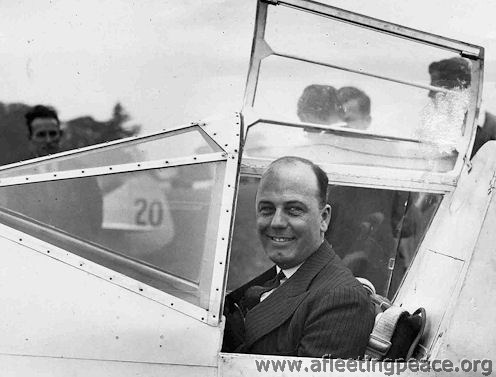 King's Cup 1934; sans trilby, for once
King's Cup 1934; sans trilby, for onceFlight said he "has an uncanny navigational sense in thick weather, but sometimes flies pensively past his destination in 100-mile visibility".
Michael Madigan wrote: "It was very difficult to resist his puckish humour and not to fall under his spell... In his early flying days he had a fox-terrier called Ginger Mick. This dog always sat in the [open] rear cockpit tethered to a spar. One day as Edgar was preparing to land he went into a loop to lose height, forgetting about his passenger. After levelling off he heard strange scrabbling noises from the back and looking out saw Ginger Mick frantically dog-paddling in the air suspended by his lead. Edgar managed to manoevre Ginger back into the plane, and after landing he thought he would never see Ginger Mick again as he rushed off, but Ginger was as persistent an aviator as his master and reappeared, to settle in his place at start-up, large as life, and eager for more."
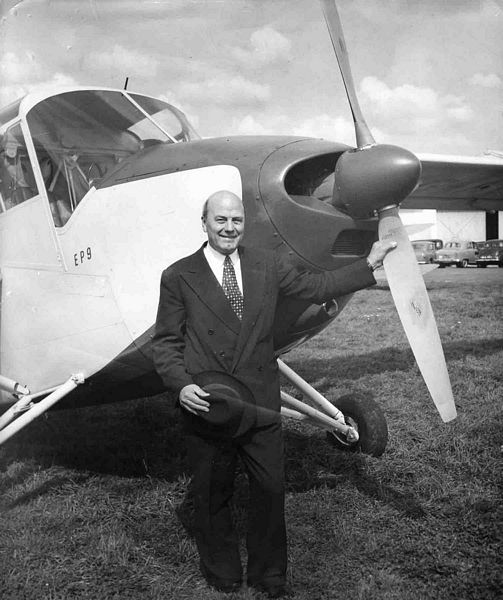 In 1956, with the EP.9 'Prospector'. And trilby.
In 1956, with the EP.9 'Prospector'. And trilby.© The Royal Aero Club
d. 21 Jan 1984; his ashes were taken by the RAAF "to be scattered in the very field in Richmond, N.S.,W., where it all began."
"Edgar Percival had a strong character, a high mental and moral sense, and was a perfectionist - the qualities which made him successful. He was the dominant presence which compelled attention in a group. This dominance arose from his vast knowledge of aviation in all its aspects... all this and his strength of will did not make him an easy associate. He could see problems clearly, had the energy to solve them, and drove himself relentlessly, which made him rather intolerant of those less gifted."
(All quotes via Martin Barraclough, for which many thanks)
-
Pugh, C RV
Lieut C RV Pugh, RN ?? -
Robb, James Milne
Sqn-Ldr (later Wing-Cmdr) James Milne Robb GCB KBE DSO DFC AFC 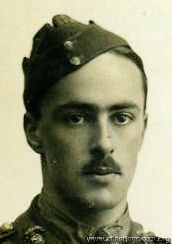
photo: 1916, when a Captain in the 4th Northumberland Fusiliers, aged 21
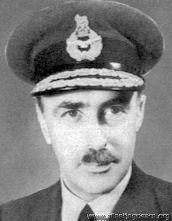
photo: 1944, aged 49
from Northumberland. RAF during WWI, then Iraq and Kurdistan. Chief Flying Instructor at RAF Wittering 1927-30.
Later Air Chief Marshall Sir James; WWI ace (7 victories); helped form the Empire Air Training Scheme in 1939; advisor to Mountbatten, Eisenhower in WWII.
d. 1968
-
Rodd, Patrick Geoffrey Tremayne
Lt Patrick Geoffrey Tremayne Rodd, RN 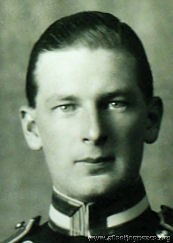 1930, aged 29
1930, aged 29"He runs a Puss Moth as well as a Speed Six Bentley. He is probably unique, in that he has had his chauffeur, Mr. J. Camp, taught to fly at the Hanworth Club, so that he can have either his aircraft or his car brought to him when he requires them. He does a great deal of Continental flying..."
He was killed 31 Jan 1933 when making too 'impetuous' a turn after taking off from a snow-covered lake at St Moritz.
A 'good natured, wealthy young pilot'. And his 1919 diaries are in the National Archives.
-
Runciman, Walter Leslie
Hon Walter Leslie Runciman OBE AFC 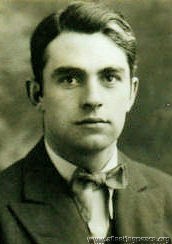
photo: 1928, aged 28
2nd Viscount Runciman of Doxford, from Newcastle-upon-Tyne; after Eton and Cambridge, joined his dad's shipping firm, then Imperial Airways. First Director-General of BOAC, Commodore of the Royal Yacht Squadron, OBE, etc, etc; died 1989
His sister, Margaret Fairweather, was killed in WWII serving in the ATA. See
https://www.ata-ferry-pilots.org/index.php/category-blog-1940/81-fairweather-margaret-mrs
-
Sayer, Phillip Edward Gerald
F/O Phillip Edward Gerald 'Gerry' Sayer 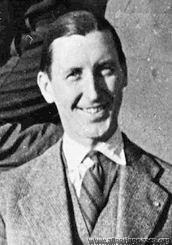
The first British pilot to fly a jet fighter, in 1941; killed in 1942 in a flying accident in Northumberland.
-
Spooner, Winifred Evelyn
Miss Winifred Evelyn Spooner
Royal Aero Club Certificate No. 8137 (11 Aug 1927)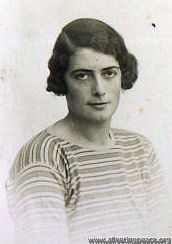 1927, aged 27
1927, aged 27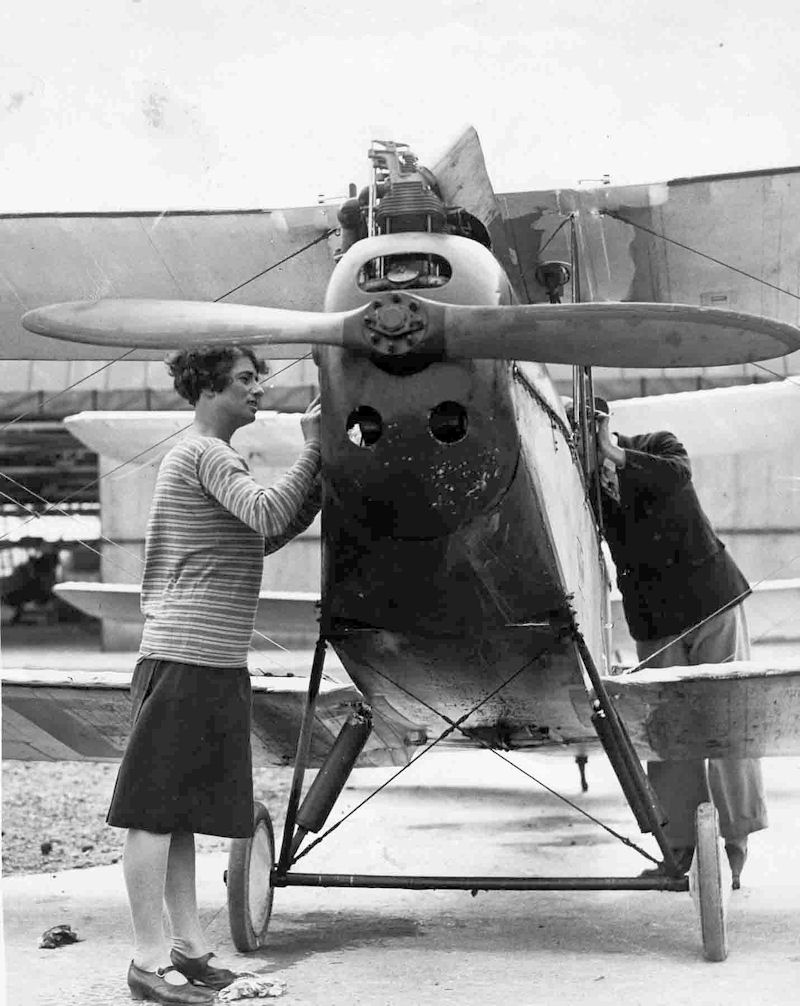
'Bad luck Wimpey' was one of the best-known women aviators of the time, and the one generally regarded as the best. She was awarded the International League of Aviation's Trophy for women aviators in 1929, and in 1930 Capt C D Barnard described her as 'the finest woman pilot in the world' (He went on to say that Lady Bailey was regarded as the 'second finest airwoman in the world', and we don't know what she thought about that...)
Learnt to fly in 1926 and took it 'more seriously than most' - in her first race in April 1928, she won the Suffolk Handicap (21 miles at 78mph), ahead of Neville Stack and four other male rivals; she won the 'heavy' category in the Round Europe Contest for Touring Aircraft in 1930 - covering 4,700 miles at 102mph, ("a very fine performance indeed", said The Times) and also competed in the Ladies event at Reading (May, 1931) - the other competitors were Amy Johnson, Grace Aitken, Pauline Gower, Dorothy Spicer, Susan Slade, Gabrielle Burr, Christina Young, and Fidelia Crossley - a historic gathering indeed.
Photo here
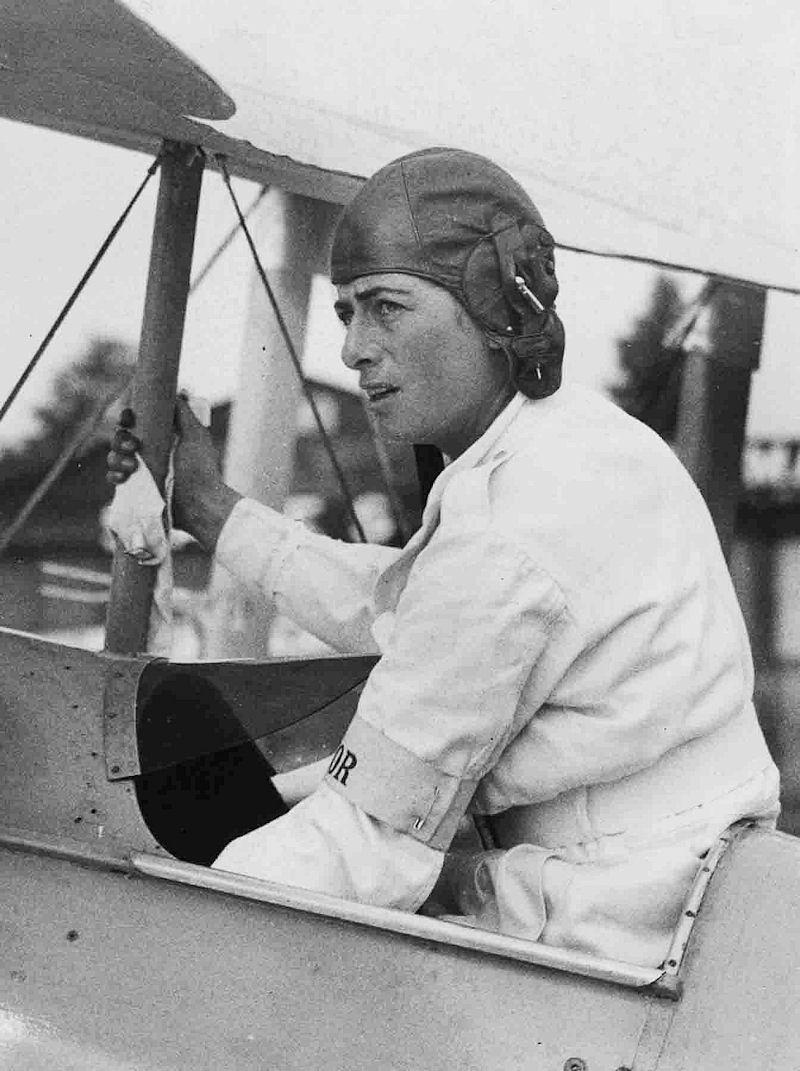
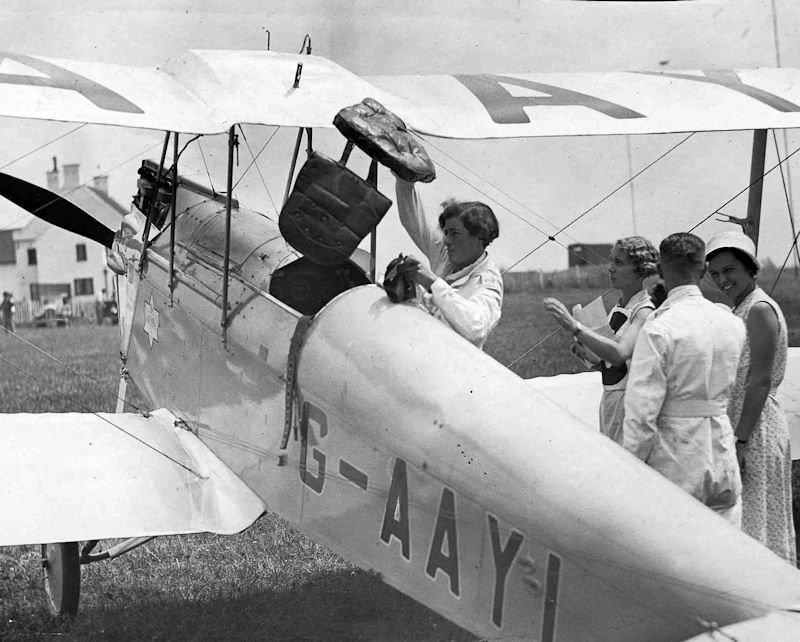
She soon took her 'B' (Commercial) Licence, and at one stage was the only professional woman pilot in the country.
In September 1927 her first flight abroad was to Venice to support the British Team in the Schneider Cup in Venice. Alan Butler (with Peter Hoare as passenger), and Hubert Broad, who took Maia Carberry, also went and, in case you were wondering, "Mrs. Carberry wore a pale blue leather flying helmet to match the colour of her Moth aeroplane."
She soon became regarded as 'one of the few women who matter in the air world'; in March 1928, when King Amanullah of Afghanistan was on a state visit to London, he inspected "the latest types of Imperial Airways passenger machines and a number of small Moth machines in private ownership. He carried on, through an interpreter, an animated conversation with Miss Winifred Brown, of Manchester, and Miss Spooner, of London, both of whom own and fly small two-seater machines."
In the 'Woman's World' section of the Inverness Courier of April 1928, this description of Winifred appeared: "[she] has not flown for very long, for it was only about three years ago that I knew her in Cologne, when she then drove, instead of an aeroplane, a two-seater car, through the crowded streets of Cologne, at a speed which most people would have been terrified to attempt. She was always, however, extremely cool and composed, and though her passengers were sometimes nervous she never seemed so. She was always very sporting, and played an excellent game of tennis. A good-looking, typically English girl, she made many friends among the British army in Cologne when doing voluntary work with the Y.M.C.A. there. [Winifred was with the 'Army of Occupation' in Germany at the time]"
She did have what she later described as her 'greatest air thrill' on Marlborough Common in May 1929; "she had been taking passengers up all day when, after one flight, she said she was not quite satisfied with the controls, and refused to take the next man until she had attended to the aeroplane. After doing so she started the propeller, and as she walked away from it the machine suddenly moved forward. Pluckily, Miss Spooner jumped and caught hold of the wing, her idea being to clamber into the cockpit and stop the engine. The machine quickly gathered speed, and she was dragged 40 or 50 yards [she later reckoned it was about 30 yards], when to the horror of the crowd the plane turned and buried its nose in the ground, hurling Miss Spooner some distance. She was unconscious. Doctors were sent for and she was taken to hospital. 'We thought she must have been killed,' an eye-witness told our representative."
She was taken to Savernake Hospital suffering from a sprained wrist, cuts, and slight concussion.
She does seem to have had quite a few run-ins with the local Constabulary; firstly in January 1929 for failing to keep her Alsatian dog under proper control (it had attacked another dog which "had no chance"), then in August 1929 for failing to produce a car driving licence (she said she had forgotten about it and flew to France the following day); then in 1931, she was fined £35 for leaving her motor car unattended and for failing to have lights on it. When she was told that she would be reported, she said: "I am used to it." A police-superintendent said there were no previous convictions recorded against her, as far as Reading was concerned. The Chairman then asked 'And none in the air? She replied 'There are no policemen in the air. That is why I like it.'"
I'm certainly sorry I missed her talk, given in April 1928 at Harrods in Brompton Road, on "Flying as a New Delight for Womankind". Later, in the early thirties, she wrote for "Good Housekeeping" on, of course, "Flying for Women", alongside such luminaries as John Galsworthy, Kate O'Brien, and Hugh Walpole.
.jpg)
September 1929 saw her accompanying NFS's chairman Freddie Guest (q.v.) to Nairobi, to inaugurate an air taxi service and give flying lessons. They took 3 aeroplanes with them, and flew them back (via South Africa) in February 1930.
She and E C T 'Cecil' Edwards tried to fly a Desoutter to Cape Town and back in December 1930, but this expedition ended up in a forced landing in the sea off southern Italy; Cecil and Winifred had to swim a couple of miles to shore.
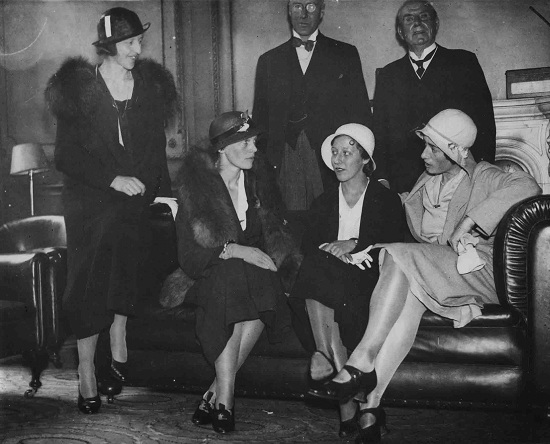
She regularly competed in the King's Cup - coming 3rd in 1928 - and was a guest at Amelia Earhart's reception at the Royal Aero Club in May 1932.
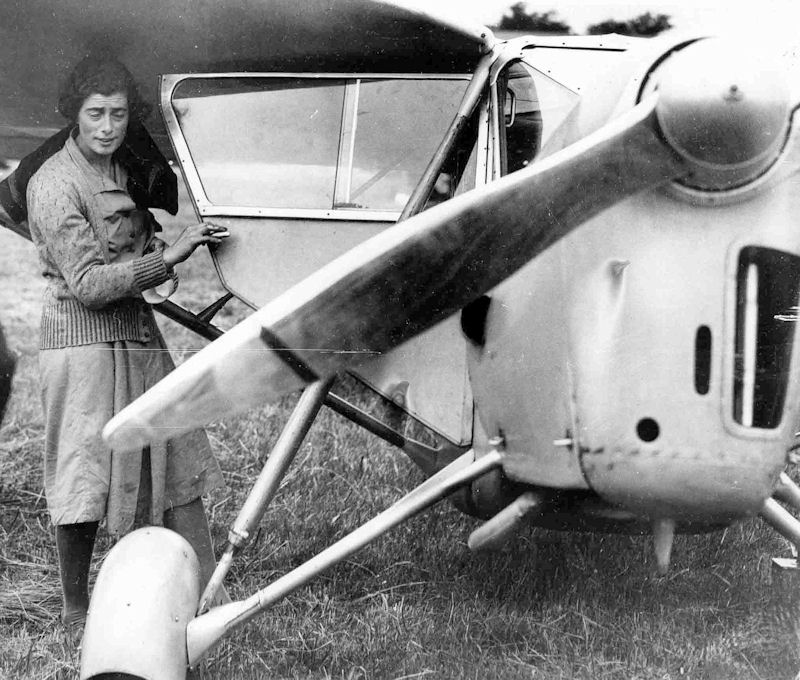
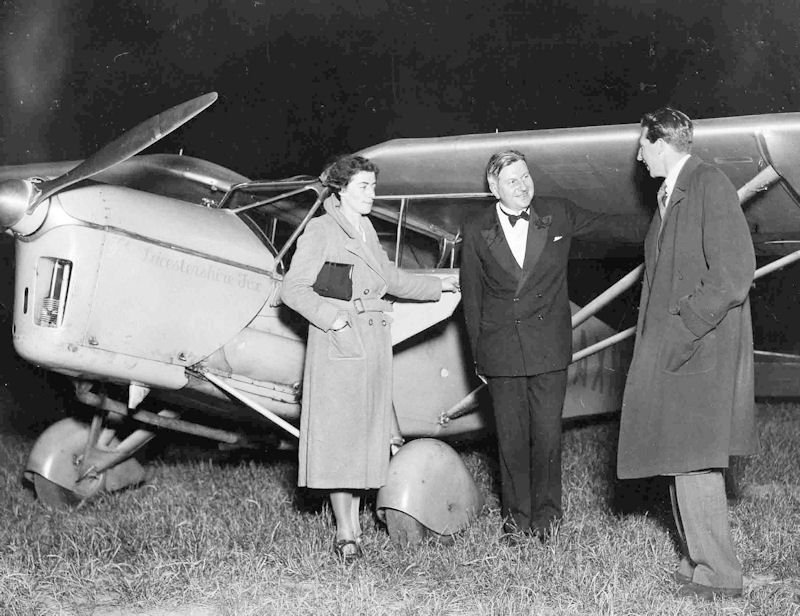
She was personal pilot to Leicestershire M.P. Lyndsey Everard from February 1931 - they are seen here with Nigel Norman.
And then, suddenly, on 13 January 1933, she was dead - not in an air crash, but as a result of a cold which rapidly worsened into pneumonia. Only few days before, in conversation with a friend, she had mentioned that her mother had died from influenza in 1918. "The deaths of both mother and daughter occurred with the same suddenness."
They are buried together in Hinton Parva: see http://www.earlyaviators.com/espoone5.htm
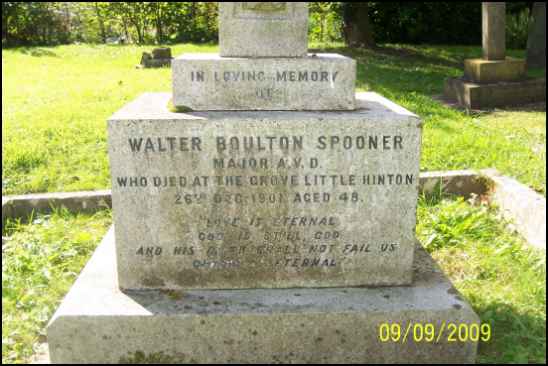
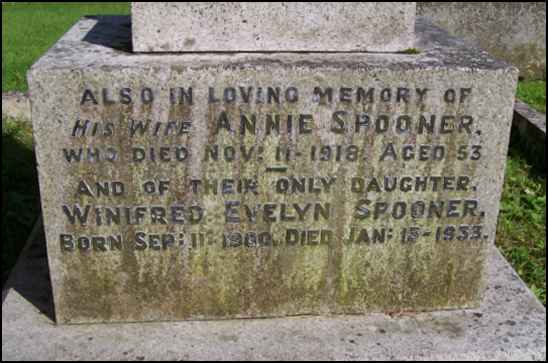
She left £1,357 0s 8d, and her brother, Capt. Frank Vivian Spooner, Indian Army (retd) was appointed administrator. She hadn't got round to writing a will.
There is a scholarship in her memory at Sherborne School for Girls.
"In the passing of Winifred Spooner the world has lost a great woman... she stood out as a woman of indomitable courage".
Winifred owned:
a 1926 DH.60 Moth (G-EBOT),
a 1928 DH.60G Gipsy Moth (G-AAAL, which she sold to Elise Battye);
a 1930 Desoutter IID (G-ABCU - this is the aeroplane she and E.C.T. Edwards ditched in the sea off Naples in December 1930), and later
a 1932 Breda 33 (G-ABXK), which was sold in Italy just 3 months before her death.
Winifred's brother Tony was chief flying instructor at the Montreal Flying Club in 1931. He was killed in March 1935 in Egypt when piloting a D.H. 84 Dragon, SU-ABI belonging to Misr Airwork, when it was caught up in a sandstorm and both engines failed.
-
Styran, Arthur John Graham
Mr Arthur John Graham 'Bill' Styran 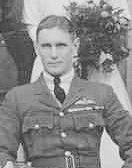 1921
1921b. 28 Jul 1890, Londonderry, Ireland but lived in England from 1891
Royal Field Artillery Lt, then RAF in WWI
m. 1921 Violet [Mitford] in Morpeth, Northumberland:
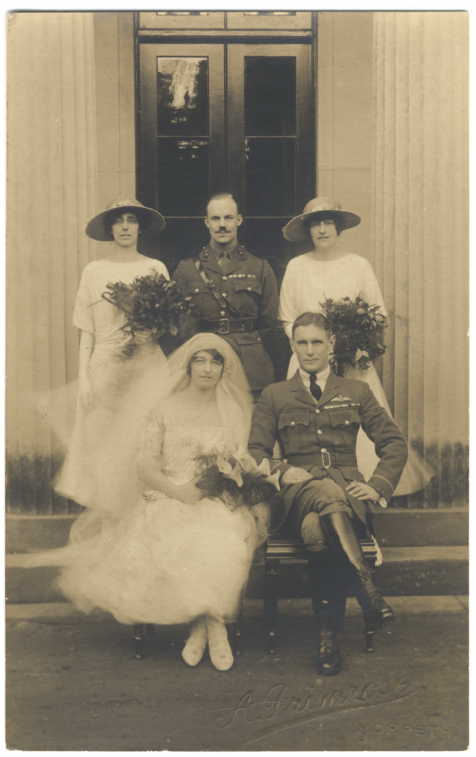 Ancestry.co.uk
Ancestry.co.uk2 October 1933: "The recent tragic sequence of British air accidents was continued yesterday by two crashes, costing four lives. The more serious occurred near Hawkhurst, Kent, when disaster overtook a private 'plane returning from the R 101 unveiling ceremony at Allonne. The machine crashed at a terrific speed out of dense mist into a field.
The three occupants, who were killed instantly, were:— CAPTAIN A. J. STYRAN, the pilot; MR lAN C. MACGILCHRIST, of Montpellier Street, W., chairman of the British Air Navigation Co., owners of the 'plane; and MR BERTRAM WILSON, a press photographer, returning with pictures he had taken of the memorial service. Visibility was very poor, and with no eye-witnesses and no survivors, the cause cf the accident remains a mystery. By coincidence, Mr Frank Crouch, stockman, at Old Place Farm, who was the first to reach the wreckage, witnessed the passing over of the ill-fated R 101 when she left for India."
"Capt Styran was the winner of the London-Cardiff Race this year"
"A FINE FLIER. A friend of Captain "Bill" Styran, who was killed in the air crash his way back from Beauvais at the week-end, tells me that "Bill " was the very best type of pilot for civil flying. He never took unnecessary risks and his services were in great demand among business men who wished to make extensive air tours. He had recently returned from such a trip in Russia. " Bill " was tall and well built, though he carried on his face the scars of a previous crash."
-
Thorn, Sidney Albert
F/O Sidney Albert 'Bill' Thorn 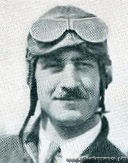 1930, aged 29
1930, aged 29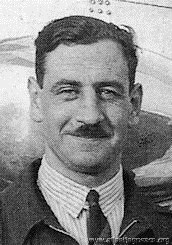 1947, aged 46
1947, aged 46Joined the RAF in 1925 (RAE Farnborough from 1927) after a stint in the Coldstream Guards followed by poultry farming in Surrey, then took over from Neville Stack (him, again) as chief test pilot for the Aircraft Disposals Company.
Charter pilot at Brooklands; sometime middleweight and light-heavyweight boxing champion, and a major in the Home Guard. Avro's test pilot from 1934.
Killed in the prototype Avro Tudor, (together with chief designer Roy Chadwick), on 23rd August 1947.
[With thanks to John Falk, who is Roly's (q.v.) son, and Bill Thorn's grandson]
Page 2 of 3

